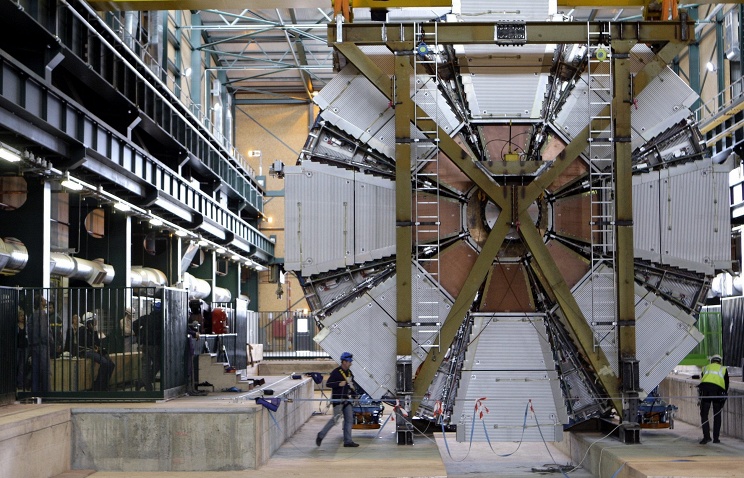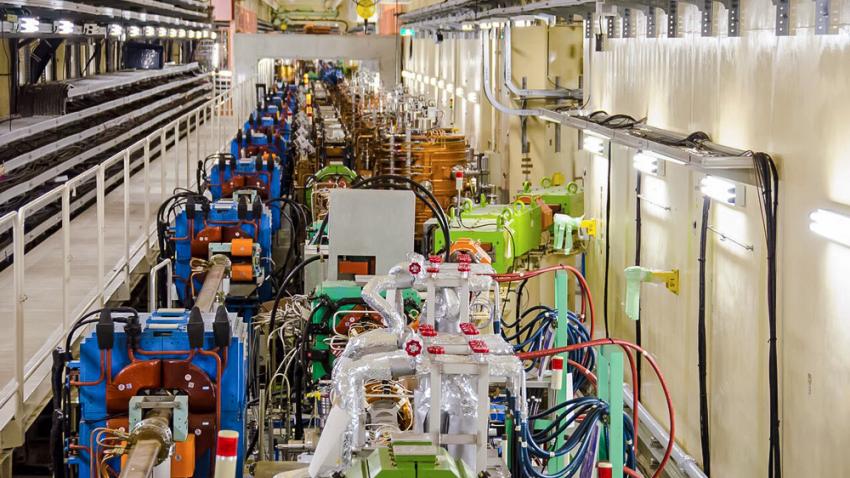Researchers have succeeded in circulating beams in the SuperKEKB collider
World science, 03 March 2016
For the first time in 5 years, particle physicists are on the cusp of having two major collider facilities running. Researchers have succeeded in circulating beams in a collider called SuperKEKB, officials at Japan’s High Energy Accelerator Research Organization (KEK) in Tsukuba announced today. If all goes as planned, researchers using SuperKEKB will start smashing electrons into positrons next year and join their counterparts working on the world’s biggest atom smasher, the Large Hadron Collider (LHC) in Switzerland, in the hunt for new physics. (A third collider, the Relativistic Heavy Ion Collider at Brookhaven National Laboratory in Upton, New York, focuses more on a type of nuclear physics.)

“It’s the first new accelerator since 2008,” when the LHC turned on, says Thomas Browder, a physicist at the University of Hawaii, Manoa, and spokesperson for the 600 physicists working on the Belle II particle detector, which will be fed by SuperKEKB. The LHC has been particle physicists’ lone collider since the United States shutdown its Tevatron collider at Fermi National Accelerator Laboratory in Batavia, Illinois, in 2011.
Both the LHC and SuperKEKB hope to discover physical phenomena that don’t fit the well-tested standard model of particle physics. But SuperKEKB will pursue a strategy different from the LHC’s. The LHC aims to blast heavy new fundamental particles into fleeting existence by smashing protons at the highest energies ever achieved. This tack succeeded spectacularly in 2012, when research at the LHC discovered the long-sought Higgs boson. In contrast, SuperKEKB will collide positrons and electrons at much lower energies to produce massive numbers of familiar particles and study their properties in great detail for hints of new particles and other phenomena.
In particular, the energy of SuperKEKB will be tuned to produce copious particles known as B mesons, each of which contains a massive particle called a bottom quark and a light antiquark. Thanks to the weirdness of quantum mechanics, the properties of a B meson depend on other particles flitting in and out of “virtual” existence within it. So if there are new particles beyond the standard model, then their ghostly presence within the B meson might skew the meson’s properties from the predictions of the standard model—even if those new particles are too heavy to produce directly at the LHC.
SuperKEKB is actually a $275 million upgrade of its older KEK B Factory (KEKB), which ran from 1999 to 2010. It consists of two rings, each 3 kilometers in circumference. Electrons circulating in one ring will be accelerated up to an energy of 7 gigaelectron-volts (GeV). Positrons, electrons’ antimatter counterparts, will travel in the other ring at an energy of up to 4 GeV. To boost the collision rate far above KEKB’s best, physicists replaced a significant proportion of the accelerator’s magnets as well as much of the beam piping and made numerous other tweaks. “The objective was to make the beam smaller while increasing the current,” says Kazunori Akai, a KEK physicist. The electrons and positrons will smash together within the Belle II detector, which is still under construction.
KEK physicists have already tasted glory. In experiments at KEK and at a rival facility at the SLAC National Accelerator Laboratory in Menlo Park, California, scientists searched for a subtle difference between the behavior of B mesons and their antimatter counterparts known as charge-parity (CP) violation. In 2001, KEK and SLAC both measured the amount of CP violation in the decays of B mesons and found that it matched a prediction by Japanese theorists Makoto Kobayashi and Toshihide Maskawa. That confirmation won the pair a share of the 2008 Nobel Prize in Physics.
 At Japan’s SuperKEKB accelerator, an electron ring, left, and a positron ring, right, share space in a 3-kilometer circular tunnel
At Japan’s SuperKEKB accelerator, an electron ring, left, and a positron ring, right, share space in a 3-kilometer circular tunnel
Physicists now want to look for physics and particles beyond the standard model. “Searching for new particles is one of the main objectives of this upgrade,” says KEK physicist Yutaka Ushiroda. Although they’ve passed a milestone, “it will take time to reach the accelerator’s full potential,” says Seiya Yamaguchi, director of KEK’s accelerator laboratory. Ushiroda says they expect to have the detector taking preliminary data in late 2017 or early 2018 with full-fledged observations commencing in late 2018. After that it will still take several more years to get both accelerator and detector operating at peak performance.
The collaboration also marks a milestone in the internationalization of Japan’s scientific efforts. It brings together researchers from 98 institutions in 23 countries. Of those only about one-fourth are based in Japan. “The attraction (for foreign researchers) is that this is the world center for research on bottom quarks and the leading facility on the intensity frontier,” Browder says, “and the 600 of us think that this will be the way to discover new physics beyond the standard model.”
With reporting by Adrian Cho
Source: www.sciencemag.org